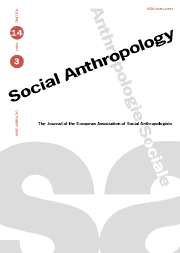Fraternity and endogamy. The House of Rothschild
Published online by Cambridge University Press: 26 October 2001
Abstract
From its late eighteenth century beginnings until the early twentieth century, the House of Rothschild was the greatest of the European banks. Its success was due not only to the financial skills of the partners but also to their innovative strategies in the sphere of kinship and marriage. The structure of the bank was dependent on the family's unique rules of succession and marriage. It was organised into five branches, each in a different country, originally directed by one of the five sons of the founder, Mayer Amschel. The branches were linked by ties of fraternity, reinforced by repeated endogamous marriages. These marriages were normally contracted between the children of partners. Given the rule, established by Mayer Amschel, that only the founder's sons and, later, their sons and sons sons could become partners, the most common pattern was for a man to marry his father's brother's daughter.
- Type
- Research Article
- Information
- Copyright
- © 2001 European Association of Social Anthropologists
Footnotes
- 1
- Cited by




